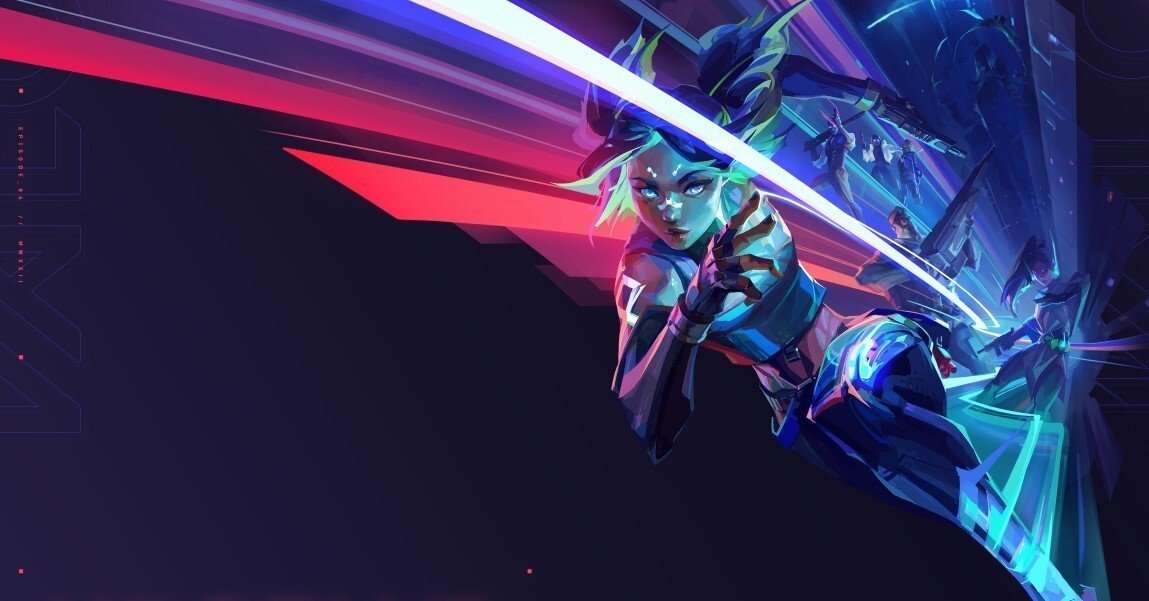The ranking system within the multiplayer shooter Valorant is a sophisticated, nuanced structure, functioning under its own set of rules, which are often subtle and not immediately apparent. It is designed to balance match selection so that everyone plays on more or less equal footing. However, it can sometimes seem unfair.
Understanding this is not easy, as there are many nuances, hidden mechanics. In our article, we’ll discuss this structure, the terms RR + MMR, and delve into all the intricacies, details.
Exploring the Ranking System
 Image: playvalorant.com
Image: playvalorant.com
It is a way of classifying players by their level of skill. Simply put, if you shoot accurately, know the mechanics well, and often win, the structure will match you with opponents, allies of a similar level of play.
The ranking system is exclusively active in Competitive Mode, accessible only after reaching the 20th level of an account.
 Image: playvalorant.com
Image: playvalorant.com
Similar to Fortnite, which is segmented into chapters, Valorant unfolds in episodes. Each episode spans approximately six months and is comprised of three acts.
During the initial act, participants are required to engage in five qualifying rounds, after which a rank is determined. The subsequent second and third acts each consist of a single match. The pinnacle rank attainable from these games is Ascendant 1.
What ranks are there?
 Image: youtube.com/@darkevilgame8505/
Image: youtube.com/@darkevilgame8505/
There are 9 ranks in total. Each of them is divided into three tiers, except for Radiant. The lowest is Iron 1, the highest — Radiant. They are arranged in the following hierarchy:
- Iron;
- Bronze;
- Silver;
- Gold;
- Platinum;
- Diamond;
- Ascendant;
- Immortal;
- Radiant.
 Image: mavink.com
Image: mavink.com
The positions can roughly be divided into two categories:
- Ranks up to Immortal. A player increases their Valorant rank simply by winning and performing well.
- From Immortal to Radiant. Here, special conditions apply, which we’ll discuss in a separate section.
In any case, after each competitive match, a unique rating is formed for the gamer. It is based on two key and interrelated concepts: RR + MMR, which we’ll explore further below.
What is Rank Rating (RR)?
 Image: facebook.com
Image: facebook.com
It’s a visible indicator that determines rank. The higher it’s, the higher the user's position in the hierarchy of positions. This parameter is calculated based on in-match activity, which includes:
- K/D/A ratio;
- game efficiency (for example, total damage dealt).
After the qualifying rounds, a player is assigned a rank that matches their level of play and is awarded 50 RR.
To move from one tier to another, such as from Iron 1 to Iron 2, 100 RR is required. Once the mark is reached, the user is given 10 RR so that a single defeat does not demote them to the previous tier. It is important to actively engage in combat and not be AFK, as the system will take this into account, deduct valuable RR.
 Image: 4kwallpapers.com
Image: 4kwallpapers.com
It is worth noting that the rank itself does not decrease. Therefore, do not worry if you have not played the game for several weeks or months. However, it is important to remember that all Valorant ranks are reset every episode, which is approximately every six months. Players need to play qualifying matches again.
Valorant is a multiplayer shooter where you can (and should!) spend time with friends. How does the ranking system work in this case?
Competitive match selection in a group
 Image: DeviantArt.com
Image: DeviantArt.com
There are special rules here. The most important of these is that you cannot play in a group of four people. This is a sad but necessary safeguard. It can be very fun to fight as such a team, but it can be unpleasant and disheartening to be the fifth player, especially if their skills are inferior to the rest of the group!
Therefore, allowed team compositions are:
- groups of two or three people;
- groups of five participants.
In the first case, gamers can only join the party if they are within a certain rank range.
|
The lowest rank of a gamer on the team |
The highest rank of a player wishing to join |
|
Iron/Bronze |
Silver |
|
Silver |
Gold |
|
Gold |
Platinum |
|
Platinum, Diamond, Ascendant, Immortal, Radiant |
Exactly one level higher. For example, from Diamond 3 to Ascendant 3 |
You cannot invite a professional with years of experience to a party of beginners. However, this does not apply to teams of five people. They are governed by different rules:
- If there are gamers with positions of Immortal or Ascendant in a low-ranked group, a penalty of 25% of the RR earned for a victory applies to the party.
- If there is a player with the category of Radiant, the penalty is even higher — 75% of the RR earned.
- This team will compete against another five-person party, so matching can take a long time.
 Image: wallpapersden.com
Image: wallpapersden.com
Gamers ranked above Immortal 1 can only play solo, in pairs, or in fives.
Rank Rating is a visible parameter that does not affect the selection of allies and opponents in a game. However, there is also a hidden parameter — Matchmaking Rating (MMR). This determines who you’ll play with.
Useful information about Matchmaking Rating (MMR)
 Image: x.com
Image: x.com
MMR is a hidden performance indicator that reflects the level of skill. Riot Games compares it to a ladder on which several players cannot stand on the same rung. If you lose, you move down; if you win, you move up.
Essentially, MMR is a secret regulator that continually tries to align a gamer's rank with their skill level. Once it succeeds, the RR a player earns for a win will be less than what they lose for a defeat. Therefore, generally, to increase your category, a series of winning matches is necessary.
 Image: playground.ru
Image: playground.ru
MMR + RR are interconnected, but not in the most obvious way. If MMR is higher than the rank, a gamer won’t earn much RR for a victory. The system believes the user's skill level is higher than their current rank.
From this perspective, there are no people who play poorly or unskillfully. If a gamer consistently loses or cannot perform effectively on the battlefield, it means their skills do not match their current rank.
 Image: uhdpaper.com
Image: uhdpaper.com
In Valorant, you cannot reach the top 500 based solely on luck. Since the system continuously strives for balance by matching opponents according to skills.
Regarding the visibility of MMR, Riot Games has a fundamental, strict stance — such parameter cannot be viewed anywhere. This may seem strange, confusing to many, but it's much simpler: to improve rank in Valorant, MMR, you need to enhance skills, play better than others, and lose less often.
Rank Act
 Image: youtube.com/@Jairusz-gp3zd
Image: youtube.com/@Jairusz-gp3zd
In the shooter, besides MMR + RR, there is the Rank Act, which measures a player's performance within an episode's act. This indicator does not affect team matchmaking in a game but helps everyone better understand at which position the user was most successful. At the top of the pyramid are triangles representing wins at the highest degree, and at the bottom, those for the lowest rank.
Suppose a person reaches Gold 3 and, thanks to their skills, successfully secures a series of wins in matches. The top of the pyramid will be filled with gold triangles. As soon as the participant moves to Platinum 1, it’ll be filled with platinum triangles.
 Image: dzen.ru
Image: dzen.ru
For every 9, 25, 50, 75, 100 wins in Competitive Mode, the boundaries of the pyramid expand. Starting with the ninth victory, act rewards become available. However, unfortunately, the Rank Act is not considered when transitioning to a new episode. Qualifying matches must also be played, and players are selected based on the user's MMR.
Leaderboard
 Image: playvalorant.com
Image: playvalorant.com
Valorant features a leaderboard of top users. To enter the leaderboard, you need to be one of the outstanding agents and reach Immortal 1. After this, the ranking rules change: a gamer needs to accumulate RR, which depends on regional values.
In North America, for example, reaching Immortal 2 requires 90 RR. Then, each victory and the RR earned will reflect on the position in the leaderboard. To maintain a place there, it is sufficient to play one competitive match per week. However, to rise higher, it is necessary to continuously spend time in the shooter, win.
 Image: shazoo.ru
Image: shazoo.ru
After reaching Immortal 3, the rules change again. To achieve Radiant, several conditions must be met:
- be among the top 500;
- pass the regional RR threshold.
For example, if a user from North America has 480 RR (the regional threshold for entering Radiant is 450), but they are not in the top 500 of their region, then they’ll remain at Immortal 3. This works the other way around too: if a player is in the top 500, but does not have enough RR, they’ll remain at Immortal 3.
The system created by Riot Games is indeed complex but largely fair. The goal is simple — gamers participating in a match should be roughly at the same level of skill.
We hope our article has helped you understand the Valorant ranking system. If you have any questions, please write them in the comments!
Main image by Ensigame


 Maxim "Sensei Mori" Tomilov
Maxim "Sensei Mori" Tomilov


















0 comments